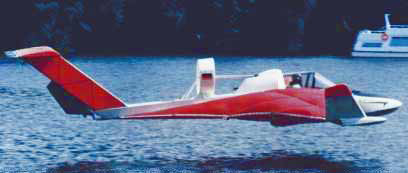After the german navy activities had come to a stop, Hanno Fischer founded his design office Fischer – Flugmechanik, and together with his later partner Klaus Matjasic begun to develop the Airfish–1.

Airfish–1 was a major re-design of the Lippisch design, in order to avoid the free-flight ability. The target was the design of a fast–ship, and not an aircraft anymore.
The development took from 1979 to 1987 when the successful testing on Lake Baldeney in Germany proofed this concept.
Airfish–1 cruised on 13 hp at 100 km/h.
Airfish-1 was the first craft of Fischer–Flugmechanik, and the first craft to operate only in Ground Effect – but with the ability to use the kinetic energy from cruise flight to jump obstacles! After jump, the craft automatically returned into ground effect.
This characteristic is the advantage of the Lippisch design, and still available on the designs of Fischer–Flugmechanik and AFD Airfoil Development.
Airfish–1 was the proof of the concept, that the Lippisch designed Ground Effect Craft are suitable to be registered and operated as ships, and anymore as expensive aircraft. This design features are patent protected.
